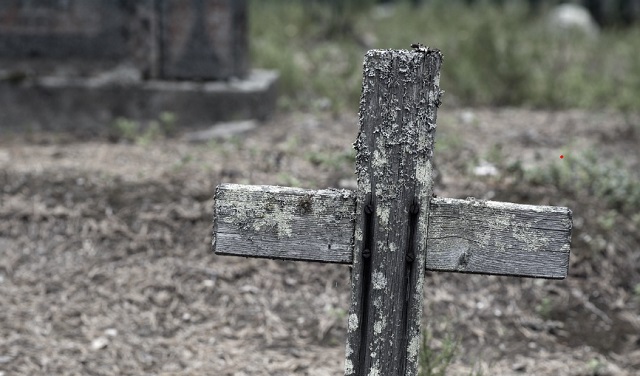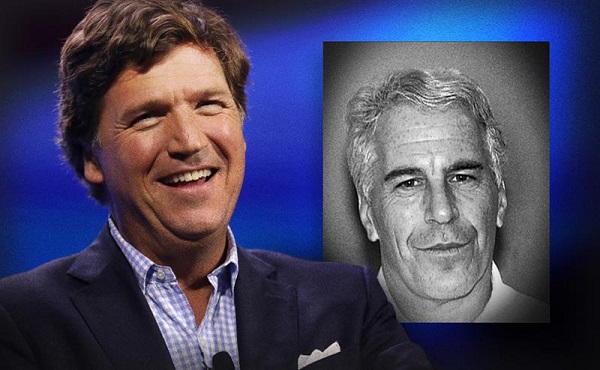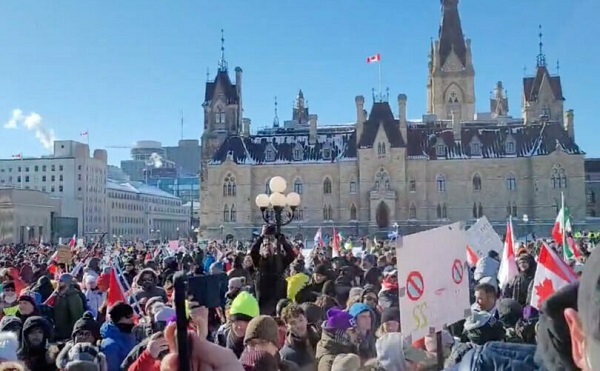Fraser Institute
No evidence of ‘mass graves’ or ‘genocide’ in residential schools

From the Fraser Institute
” substantial pushback gradually developed among a group of retired judges, lawyers, professors, journalists and others who have had careers in researching and evaluating evidence. It’s no accident that most are retired, because that gives them some protection against attempts to silence them as “deniers.” “
The following is a summary of the 2023 book Grave Error: How the Media Misled Us (and the Truth About Residential Schools) by C.P. Champion and Tom Flanagan.
On May 27, 2021, Rosanne Casimir, Chief of the Tk’emlúps te Secwepemc (Kamloops Indian Band), announced that ground-penetrating radar (GPR) had located the remains of 215 “missing children” in an apple orchard on the site of a former residential school.
Politicians and media seized on the announcement, and stories of “mass unmarked graves” and “burials of missing children” ricocheted around Canada and indeed much of the world. Prime Minister Justin Trudeau set the tone of the public response by ordering Canadian flags to be flown at half-mast on all federal buildings to honour the “215 children whose lives were taken at the Kamloops residential school,” thus elevating the possible burials to the status of victims of foul play and making Canada sound like a charnel house of murdered children.
According to Canadian newspaper editors, the discovery of the so-called unmarked graves was the “news story of the year.” And the World Press Photo of the Year award went to a “haunting image of red dresses hung on crosses along a roadside, with a rainbow in the background, commemorating children who died at a residential school created to assimilate Indigenous children in Canada.”
These events created a narrative about the genocidal nature of residential schools, which were established in the 19th and 20th centuries by churches and the government to educate Indigenous children and assimilate them into Canadian society. That narrative went unchallenged at first. Yet substantial pushback gradually developed among a group of retired judges, lawyers, professors, journalists and others who have had careers in researching and evaluating evidence. It’s no accident that most are retired, because that gives them some protection against attempts to silence them as “deniers.” In the words of Janis Joplin, “Freedom’s just another word for nothin’ left to lose.” I published a book, which has been an Amazon Canada bestseller, proving Canadians’ desire for accurate information on this topic.
The book is a collection of some of the best pushback essays published in response to the Kamloops mythology. They analyze and critique the false narrative of unmarked graves, missing children, forced attendance and genocidal conditions at residential schools. The book’s title, Grave Error, summarizes the authors’ view of the Kamloops narrative. It is wrong, and not just wrong, but egregiously wrong. It deserves our sardonic title. And our book shows in detail just why and where the narrative is wrong.
Several of these authors, as well as others who have helped research and edit these publications, had for many years been writing for major metropolitan dailies, national magazines, academic journals, university presses and commercial publishers. However, they quickly learned that the corporate, legacy or mainstream media—in addition to religious leaders and politicians—have little desire to stand up to the narrative flow of a moral panic. They thus wrote about residential schools mainly in specialized journals such as The Dorchester Review, online daily media such as True North and the Western Standard, and online journals such as Unherd and History Reclaimed whose raison d’être is to challenge conventional wisdom.
For example, the first essay—“In Kamloops, Not One Body Has Been Found,” by Montreal historian Jacques Rouillard—has done more than any other single publication to punch holes in the false narrative of unmarked graves and missing children. Other essays punch more holes. Academic provocateur Frances Widdowson shows how the legend of murdered children and unmarked graves was spread by defrocked United Church minister Kevin Annett before it popped up at Kamloops. Retired professor Hymie Rubenstein and collaborators examine the “evidence” of unmarked graves, such as the results of the GPR, and find there’s nothing—repeat, nothing—there. Journalist Jonathan Kay explains how the media got the story completely wrong, generating the worst fake news in Canadian history. Retired professor Ian Gentles examines health conditions in the schools and shows that children were better off there than at home on reserves. My contribution criticizes the prolific but weak body of research purporting to show that attendance at residential schools created a historical trauma that’s responsible for the social pathologies in Indigenous communities. Retired professor Rodney Clifton recounts from personal experience how benign conditions could be in residential schools. And other essays explore other fallacies.
Our book demonstrates that all the major elements of the Kamloops narrative are either false or highly exaggerated. No unmarked graves have been discovered at Kamloops or elsewhere—not one. As of August 2023, there had been 20 announcements of soil “anomalies” discovered by GPR near residential schools across Canada; but most have not even been excavated, so what, if anything, lies beneath the surface remains unknown. Where excavations have taken place, no burials related to residential schools have been found.
In other words, there are no “missing children.” The fate of some children may have been forgotten with the passage of generations—forgotten by their own families, that is. But “forgotten” is not the same as “missing.” The myth of missing students arose from a failure of the Truth and Reconciliation Commission’s researchers to cross-reference the vast number of historical documents about residential schools and the children who attended them. The documentation exists, but the commissioners did not avail themselves of it.
Media stories about Indian residential schools are almost always accompanied by the frightening claim that 150,000 students were “forced to attend” these schools, but that claim is misleading at best. Children were not legally required to attend residential school unless no reserve day school was available; and even then, the law was only sporadically enforced. For students who did attend residential schools, an application form signed by a parent or other guardian was required. The simple truth is that many Indian parents saw residential schools as the best option available for their children.
Prior to 1990, residential schools enjoyed largely favourable media coverage, with many positive testimonials from former students. Indeed, alumni of residential schools comprised most of the emerging First Nations elite. But then Manitoba regional Chief Phil Fontaine appeared on a popular CBC television show hosted by Barbara Frum and claimed he had suffered sexual abuse at a residential school. He did not give details nor specify whether the alleged abusers were missionary priests, lay staff members or other students. Nonetheless, things went south quickly after Fontaine’s appearance, as claims of abuse multiplied and lawyers started to bring them to court.
To avoid clogging the justice system with lawsuits, the Liberal government of Paul Martin negotiated a settlement in 2005, which was accepted shortly afterwards by the Conservative government of Stephen Harper. Ultimately about $5 billion in compensation was paid to about 80,000 claimants, and in 2008 Prime Minister Harper publicly apologized for the existence of residential schools.
Harper might have thought that the payments and his apology would be the end of the story, but instead it became the beginning of a new chapter. The Truth and Reconciliation Commission (TRC) that he appointed took off in its own direction after the initial set of commissioners resigned and were replaced on short notice. The TRC held emotional public hearings around the country where “survivors” told their stories without fact-checking or cross-examination. The TRC concluded in 2015 that the residential schools amounted to “cultural genocide.”
Cultural genocide is a metaphor, an emotive term for assimilation or integration of an ethnic minority into an encompassing society. The next step, in turned out, was to start speaking with increasing boldness of a literal physical genocide involving real deaths. The claims about missing children, unmarked burials and “mass graves” reinforced a genocide scenario.
Perhaps sensing the weakness of their evidence-free position, purveyors of the genocide narrative are beginning to double down, demanding that criticism of their ideology be made illegal. For example, in 2022, Winnipeg NDP MP Leah Gazan, introduced a resolution declaring residential schools to be genocidal—the House of Commons gave unanimous consent.
So, there we are—a narrative about genocide in residential schools firmly established in the public domain while unbelievers are called heretics (“denialists”) and threatened with criminal prosecution. But don’t believe the hype, no matter how often the propositions are repeated. As the little boy said in Hans Christian Andersen’s fairytale, “The Emperor has no clothes.”
Author: Tom Flanagan
Business
Carney government should recognize that private sector drives Canada’s economy

From the Fraser Institute
An important lesson of the Justin Trudeau era is that economic prosperity cannot be built on the back of an expanding government sector, higher deficits and ever-greater political tinkering with the economy. It’s time for something different.
At the half-way point of what’s shaping up to be a turbulent 2025, how is Canada’s economy faring?
By any measure, the past six months have been a bumpy ride. The Canadian economy lost momentum over much of last year, with economic growth cooling, job creation slowing, and the unemployment rate creeping higher. Then as 2025 began came the shock of Donald Trump’s tariffs and—more recently—the outbreak of increased military conflict in the Middle East.
Amid these developments, indices of global policy and business uncertainty have risen sharply. This creates a difficult backdrop for Canadian businesses and for the re-elected Liberal government led by Prime Minister Carney.
Economic growth in the first quarter of 2025 received a temporary boost from surging cross-border trade as companies in both Canada and the United States sought to “front-run” the risk of tariffs by increasing purchases of manufactured and semi-finished goods and building up inventories. But trade flows are now diminishing as higher U.S. and Canadian tariffs come into effect in some sectors and are threatened in others. Meanwhile, consumer confidence has plunged, household spending has softened, housing markets across most of Canada are in a funk, and companies are pausing investments until there’s greater clarity on the future of the Canada-U.S. trade relationship.
Some forecasters believe a recession will unfold over the second and third quarters of 2025, as the Canadian economy absorbs a mix of internal and external blows, before rebounding modestly in 2026. For this year, average economic growth (after inflation) is unlikely to exceed 1 per cent, down from 1.6 per cent in 2024. The unemployment rate is expected to tick higher over the next 12-18 months. Housing starts are on track to drop, notwithstanding a rhetorical political commitment to boost housing supply in Ottawa and several provincial capitals. And business investment is poised to decline further or—at best—remain flat, continuing the pattern seen throughout the Trudeau era. Even this underwhelming forecast is premised on the assumption that ongoing trade tensions with the U.S. don’t spiral out of control.
How should Canadian policymakers respond to this unsettled economic picture? We do not face a hit to the economy remotely equivalent to that generated by the COVID pandemic in 2020-21, so there’s no argument for additional deficit-financed spending by governments—particularly when public debt already has been on a tear.
For the Carney government, the top priority must be to lessen uncertainty around Canada-U.S. trade and mitigate the threat of sweeping tariffs as quickly as possible. Until this is accomplished, the economic outlook will remain dire.
A second priority is to improve the “hosting conditions” for business growth in Canada after almost a decade of stagnant living standards and chronically weak private-sector investment. This will require significant reforms to current taxation, regulatory and project assessment policies aimed at making Canada a more attractive location for companies, investors and entrepreneurs.
An important lesson of the Justin Trudeau era is that economic prosperity cannot be built on the back of an expanding government sector, higher deficits and ever-greater political tinkering with the economy. It’s time for something different.
Policymakers must recognize that Canada is a largely market-based economy where the private sector rather than government is responsible for the bulk of production, employment, investment, innovation and exports. This insight should inform the design and delivery of economic policymaking going forward.
Automotive
Federal government should swiftly axe foolish EV mandate

From the Fraser Institute
Two recent events exemplify the fundamental irrationality that is Canada’s electric vehicle (EV) policy.
First, the Carney government re-committed to Justin Trudeau’s EV transition mandate that by 2035 all (that’s 100 per cent) of new car sales in Canada consist of “zero emission vehicles” including battery EVs, plug-in hybrid EVs and fuel-cell powered vehicles (which are virtually non-existent in today’s market). This policy has been a foolish idea since inception. The mass of car-buyers in Canada showed little desire to buy them in 2022, when the government announced the plan, and they still don’t want them.
Second, President Trump’s “Big Beautiful” budget bill has slashed taxpayer subsidies for buying new and used EVs, ended federal support for EV charging stations, and limited the ability of states to use fuel standards to force EVs onto the sales lot. Of course, Canada should not craft policy to simply match U.S. policy, but in light of policy changes south of the border Canadian policymakers would be wise to give their own EV policies a rethink.
And in this case, a rethink—that is, scrapping Ottawa’s mandate—would only benefit most Canadians. Indeed, most Canadians disapprove of the mandate; most do not want to buy EVs; most can’t afford to buy EVs (which are more expensive than traditional internal combustion vehicles and more expensive to insure and repair); and if they do manage to swing the cost of an EV, most will likely find it difficult to find public charging stations.
Also, consider this. Globally, the mining sector likely lacks the ability to keep up with the supply of metals needed to produce EVs and satisfy government mandates like we have in Canada, potentially further driving up production costs and ultimately sticker prices.
Finally, if you’re worried about losing the climate and environmental benefits of an EV transition, you should, well, not worry that much. The benefits of vehicle electrification for climate/environmental risk reduction have been oversold. In some circumstances EVs can help reduce GHG emissions—in others, they can make them worse. It depends on the fuel used to generate electricity used to charge them. And EVs have environmental negatives of their own—their fancy tires cause a lot of fine particulate pollution, one of the more harmful types of air pollution that can affect our health. And when they burst into flames (which they do with disturbing regularity) they spew toxic metals and plastics into the air with abandon.
So, to sum up in point form. Prime Minister Carney’s government has re-upped its commitment to the Trudeau-era 2035 EV mandate even while Canadians have shown for years that most don’t want to buy them. EVs don’t provide meaningful environmental benefits. They represent the worst of public policy (picking winning or losing technologies in mass markets). They are unjust (tax-robbing people who can’t afford them to subsidize those who can). And taxpayer-funded “investments” in EVs and EV-battery technology will likely be wasted in light of the diminishing U.S. market for Canadian EV tech.
If ever there was a policy so justifiably axed on its failed merits, it’s Ottawa’s EV mandate. Hopefully, the pragmatists we’ve heard much about since Carney’s election victory will acknowledge EV reality.
-

 Business1 day ago
Business1 day agoWEF-linked Linda Yaccarino to step down as CEO of X
-

 Automotive2 days ago
Automotive2 days agoFederal government should swiftly axe foolish EV mandate
-

 Crime2 days ago
Crime2 days agoTucker Carlson: US intelligence is shielding Epstein network, not President Trump
-

 Freedom Convoy2 days ago
Freedom Convoy2 days agoCourt Orders Bank Freezing Records in Freedom Convoy Case
-

 International2 days ago
International2 days agoNo more shoes off: Trump ends TSA’s decades-old rule
-

 Alberta2 days ago
Alberta2 days ago‘Far too serious for such uninformed, careless journalism’: Complaint filed against Globe and Mail article challenging Alberta’s gender surgery law
-

 Business1 day ago
Business1 day ago‘Experts’ Warned Free Markets Would Ruin Argentina — Looks Like They Were Dead Wrong
-

 Automotive1 day ago
Automotive1 day agoAmerica’s EV Industry Must Now Compete On A Level Playing Field







